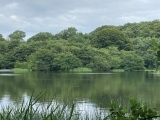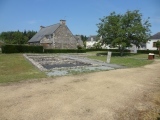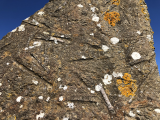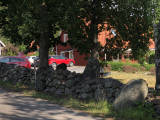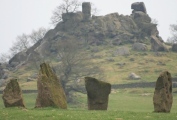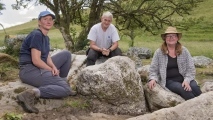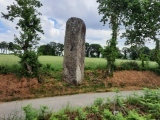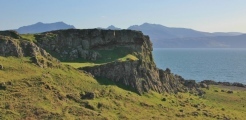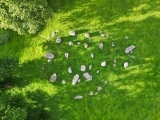Andy Burnham's Blog, page 99
July 19, 2023
White Loch of Myrton
White Loch of Myrton Crannog is located in the SE corner of the loch c. 1.5 miles N of Monreith, a coastal village in Dumfries and Galloway. It was constructed as a stone mound bounded by approximately 100 vertical piles driven into the loch bed. The surface of the crannog is densely tree-covered obscuring any signs of occupation. There is no visible evidence of a causeway from the east bank due to a high water level.
Published on July 19, 2023 04:54
Clos-Mulon
The remains of a large Gallo-Roman villa in Bretagne:Côtes-D'Armor.
With information boards and a nice scale model on site (pictured on our page).
It was a part of the Roman city Coriosolis (=Corseul)
With information boards and a nice scale model on site (pictured on our page).
It was a part of the Roman city Coriosolis (=Corseul)
Published on July 19, 2023 03:49
July 17, 2023
Degerhamn Standing Stone
Just south of the towns of Degerhamn and Södra Möckleby and next to the main road is a 3 metre tall standing stone. The stone is made from a large slab of red limestone - commonly found all over the island of Öland. However, the most noticeable part is the west facing side, which is covered in orthoceras fossils - an extinct type of squid from the Middle Ordovician period.
Published on July 17, 2023 15:29
Färjestaden Domarring
Situated in the suburbs of Färjestaden on Öland are the remains of a supposed stone circle. Located at the site are four standing stones divided by a dry stone wall. The four standing stones are the only remains of the stone circle today.
Published on July 17, 2023 15:25
July 16, 2023
La Chapelle du Chene
An ally of 12 modern granite stones to the right of the road up to the Chapel, situated on an old Pilgrim's Route .Each stone is numbered and carved with a religious theme.
Published on July 16, 2023 04:51
July 15, 2023
Nine Stones Close
An archaeological walk around Harthill Moor, Derbyshire taking in the stone circle, two hillforts the Rowtor rock art and lots more, Saturday 22nd July, more in the comments on our page. Stone Circle in Derbyshire. Only four stones remain of what once was a 45-foot circle of stones. The stones are the tallest in Derbyshire, ranging from 1.2m (4 feet) to 2.1m (7 feet) in height, this tallest being located at the southern end of the circle.
Published on July 15, 2023 04:41
July 14, 2023
Valley of Stones quarry
A team of archaeologists has discovered a rare rock used to make tools in the Stone Age. The "polishing boulder", found in the Valley of the Stones near Dorchester, would have been used to make stone axe heads more than 5,000 years ago. See article on BBC Dorset. A quarry for the stones used in the several megalithic sites within about 5 miles of the valley. The Valley of Stones has been a National Nature Reserve since 1999. The English Nature noticeboard on site mentions that, as well as all the stones which are haphazardly arranged due to a geological event, some of them are arranged as a circle.
Published on July 14, 2023 05:18
July 13, 2023
Menhir du Bayo
A 6.3 metre tall granite menhir standing at the edge of the road near to the hamlet of Bayo, 3 km southwest of Ploeuc-sur-Lie. About 100 metres to the east from this, is a second granite menhir, length about 5 metres, which has fallen and is lying in the hedge bank.
Published on July 13, 2023 10:15
July 12, 2023
Dunagoil hillfort
Dunagoil fort, Isle of Bute occupies a headland which is virtually inaccessible except from the inland side. It was defended by a timber-laced stone rampart, vitrified after catching fire. For a nearby site rather easier to visit, if less impressive, see Scalpsie Dun just sent in by Skryabin
Published on July 12, 2023 04:04
July 11, 2023
Croft Moraig
A stone circle in Perthshire with two outlying stones to the north-north-east. There is a good information board here outlining the history of the site, which has three distinct phases. Initially fourteen wooden posts were erected in a horseshoe shape approximately 8m x 7m, open to the SSW. These were later replaced by eight stones between 0.8m and 1.4m high. This recently captured overhead shot shows the concentric construction.
Published on July 11, 2023 08:00

